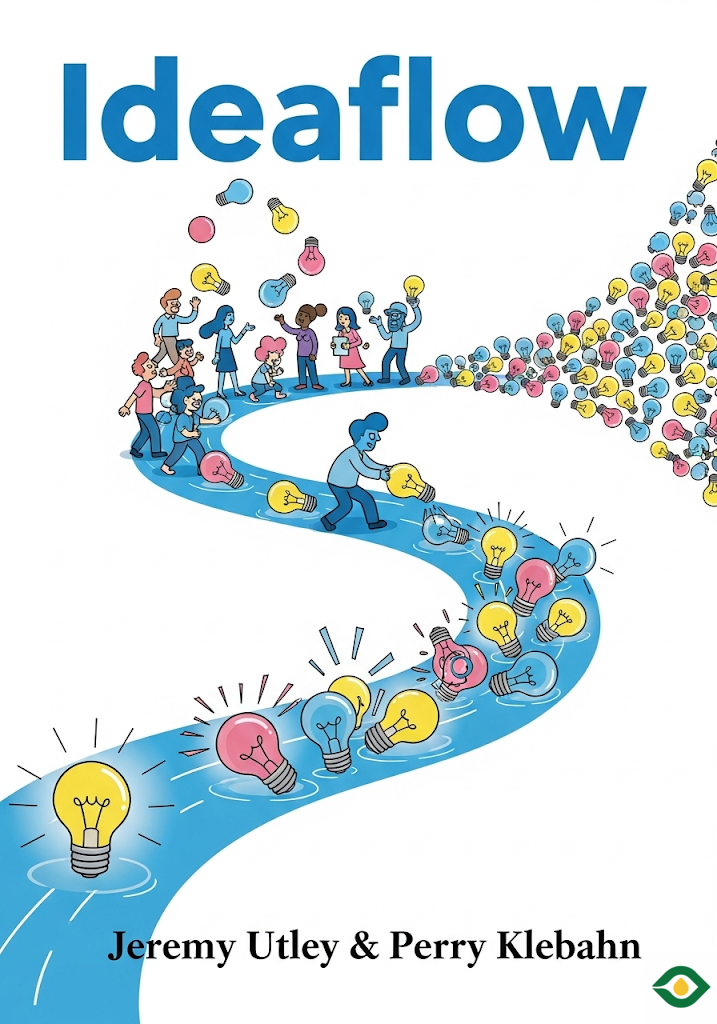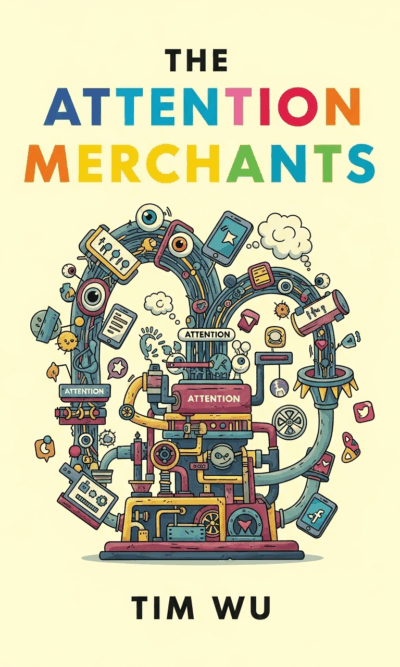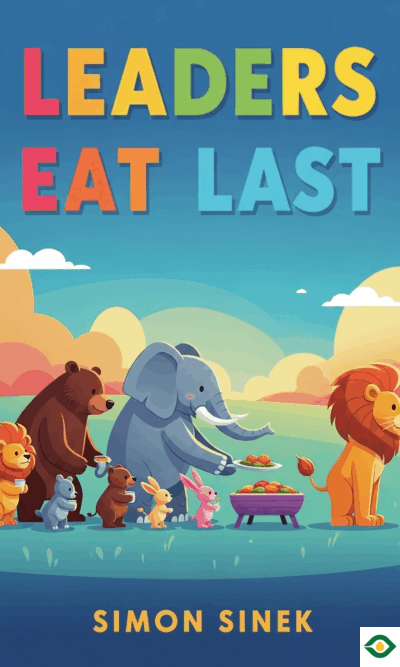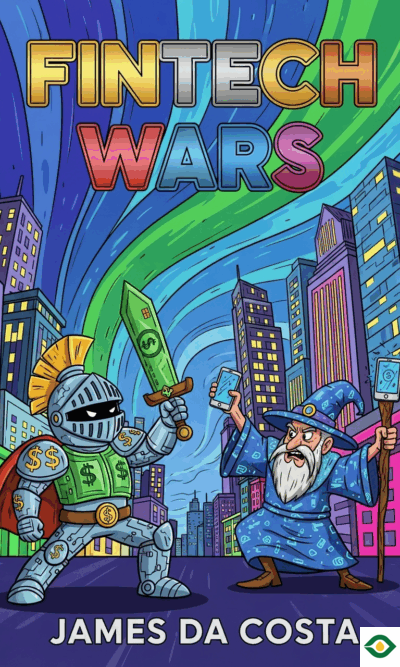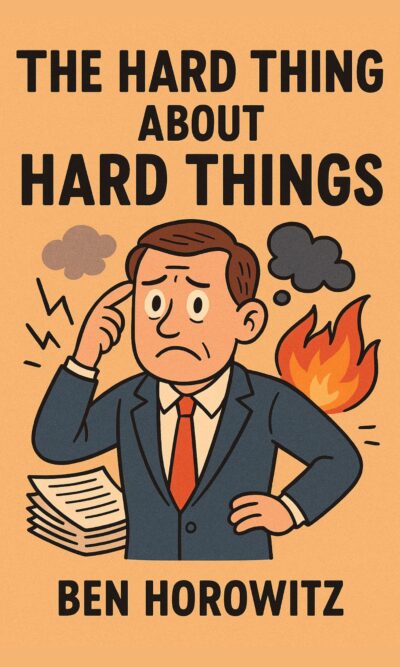Description
Creativity often feels like a mystery. Some people seem to have endless ideas, while others struggle to think of just one. But creativity is not magic, and it is not limited to a select few. It is something that can be measured, practiced, and improved. That’s the central message of Ideaflow. The book shows that the more ideas you generate, the more chances you have to discover something remarkable. Creativity is less about waiting for inspiration and more about creating an environment where ideas flow freely and are given room to grow.
The story begins with a lesson from Patagonia, the outdoor clothing company. At one point, their designs had grown stale because they focused too much on past successes. They had not been paying attention to their “ideaflow,” the simple measure of how many new ideas were being produced. Without a steady stream of ideas, innovation dries up, and companies end up repeating themselves. Patagonia learned that measuring and encouraging ideaflow was essential for bringing freshness back into their products.
So what is ideaflow exactly? At its heart, it is the practice of generating as many ideas as possible in response to a problem. The number matters more than the immediate quality. Why? Because innovation comes from volume. If you produce only a handful of ideas, the chances of finding a truly original one are very small. But if you aim for hundreds, or even thousands, then the odds of stumbling upon something new and powerful grow dramatically. It’s like panning for gold—most of what you scoop up might be ordinary, but every so often you’ll strike something valuable.
Organizations often shy away from this messy process because it doesn’t look neat or efficient. High ideaflow environments can appear chaotic. People might be sketching ideas, taking breaks, bouncing concepts around informally, or even failing repeatedly. But this seeming disorder is part of the creative process. Innovation requires space for trial, error, and discovery. A company that values only flawless execution and strict efficiency will eventually find itself unable to innovate.
One important mindset shift is focusing on quantity before quality. Traditional wisdom tells us to seek the “best” idea, but Ideaflow argues that the best idea comes only after many others are explored. One simple exercise is to set an “idea quota.” For example, challenge yourself to come up with 20 or 30 solutions to a single problem. At first, the ideas may seem obvious or even silly. But once the surface-level answers are out of the way, deeper, more original thoughts often begin to emerge.
Another useful approach is the “seed, sleep, solve” technique. Start by planting a seed—clearly define the problem you want to solve. Then, take a break, or literally sleep on it. Your subconscious will continue to make connections in the background. When you return, write down as many solutions as possible. Don’t evaluate them yet. Just capture them. The simple act of recording ideas, even small ones, ensures they are not lost. Later, when you revisit them with fresh eyes, the best ones will stand out naturally.
Recording every idea is a crucial habit. Thoughts are fragile, and if they are not written down, they vanish quickly. Using pen and paper is often more effective than digital tools, because it avoids distractions. Once ideas are gathered, set aside time to review them. Some may not seem strong in the moment, but days later, you may recognize hidden value. Creativity thrives when you create systems for capturing and revisiting thoughts.
New perspectives also fuel ideaflow. Reading widely, traveling, pursuing hobbies, or simply talking to people from different fields exposes you to fresh ways of thinking. Google, for example, has famously given employees time to explore personal interests, which often sparks breakthroughs that later benefit the company.
For decades, businesses have leaned on brainstorming sessions to spark ideas. But the traditional method often falls short. Meetings are rushed, too many generalists are invited, and the environment discourages real debate. The result is a handful of safe, obvious ideas. True brainstorming requires structure and freedom in equal measure. A better model is to begin with individuals writing ideas silently, then sharing in small groups, alternating between solo reflection and group discussion. This rhythm allows both extroverts and introverts to contribute and creates space for originality.
Numbers also matter. Research suggests that thousands of ideas might be needed before one breakthrough emerges. For example, 2,000 raw ideas might lead to 100 prototypes, which could lead to 5 products, of which one is a hit. This “idea ratio” reminds us that innovation is a numbers game. Quantity really does lead to quality.
Once ideas start flowing, the next challenge is deciding what to test. Here, it’s useful to think about flow again. Just as water must move to remain fresh, ideas must be tested, refined, and developed to have any chance of surviving. The key is not to select the “perfect” idea right away, but to keep moving multiple ideas forward, experimenting with them in the real world. Even wild ideas deserve quick tests, because until they are tried, it’s impossible to know whether they might work.
Experimentation should be fast, cheap, and constant. Failures should not be feared—they are the natural cost of learning. Small, low-cost experiments are especially powerful. Netflix began with a cheap test: mailing a single CD to themselves to see if it would arrive intact. That one test proved their concept could work, long before investing heavily in infrastructure. This shows that innovation often starts with small, scrappy trials.
Another important lesson is to focus on desirability before feasibility. Instead of asking first whether something can be built, ask whether people actually want it. If consumers show strong interest, the effort to make it feasible becomes worthwhile. Testing desirability early saves time and ensures energy is spent on ideas that matter.
A playful example of experimentation is the Marshmallow Challenge. Teams must build the tallest tower they can using spaghetti, tape, and a marshmallow. Surprisingly, young children often outperform business school graduates. Why? Because children naturally test and rebuild as they go, while adults over-plan and resist trial and error. The lesson is clear: constant testing and iteration beats careful planning that leaves no time for experimentation.
To win support for bold ideas in a corporate environment, you can use the retroactive technique. Imagine your idea was rejected, and think about why. Then, address those objections in your actual pitch. Small, early wins with simple tests can also build credibility and help gain approval for bigger experiments later.
Ultimately, ideaflow is about cultivating habits that encourage constant idea generation, capture, and testing. It is about making creativity a measurable and daily practice, not an occasional stroke of genius. The companies and individuals who embrace this approach are better equipped to solve problems, adapt to change, and discover innovations that truly stand out.
The message is simple but powerful: creativity is not about waiting for inspiration. It is about creating the conditions for ideas to flow freely, producing them in abundance, and daring to test them in the real world. If you do that consistently, breakthroughs are not accidents—they are inevitable.

